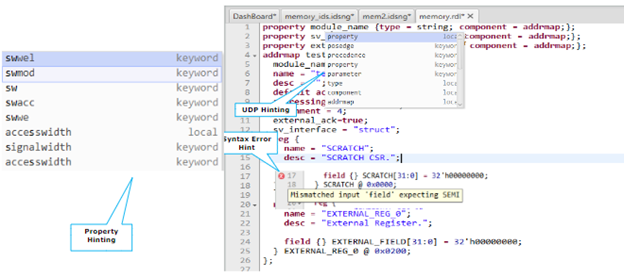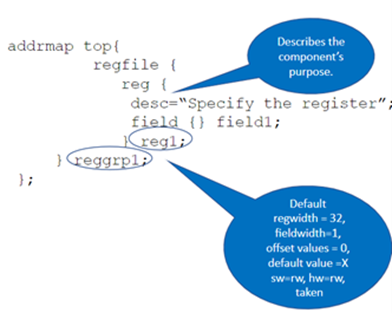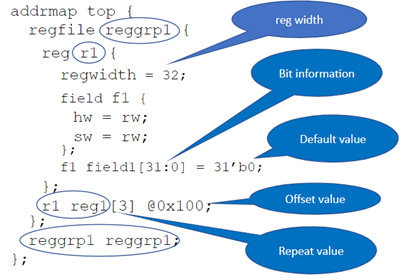Contemporary system-on-chip (SoC) designs are essential for all the most demanding electronics applications: artificial intelligence (AI), high-performance computing (HPC), autonomous vehicles, smartphones, and more. Many different architectures, processors, bus protocols, and intellectual property (IP) blocks are available to support these diverse chips. However, one key design component spans all applications: programmable registers, which can be specified using the System Register Description Language (SystemRDL) standard.

Registers Are Everywhere
The Role of SystemRDL
Request a Product Evaluation
SystemRDL Overview
Designers or architects use SystemRDL to describe registers (and memories) along with their properties in a concise format that is readable by both humans and EDA tools. Attributes of each register can include width, fields within the register, and number of bits in each field. There are two forms of register definition: anonymous and definitive. In the latter case, a register can be defined once and then instantiated multiple times within the SystemRDL specification.

Example of an Anonymous Definition
 Example of a Definitive Definition
Example of a Definitive Definition
Agnisys SystemRDL Compiler
Agnisys SystemRDL Editor
-
Essential functions such as copy, paste, select all, and find
-
Automatic indentation for better readability and maintenance
-
Keyword and syntax highlighting to aid in understanding components
-
Intelligent, context-specific SystemRDL property hinting (suggestions)
-
Template hinting and insertion with or without parameters
-
Highlighting of SystemRDL syntax errors.
-
Full support for parameter overriding, dynamic assignment, and stride syntax
-
Code folding so that long and complex code segments can be collapsed or expanded
-
Support for all UDP properties, with usage description and documentation links


